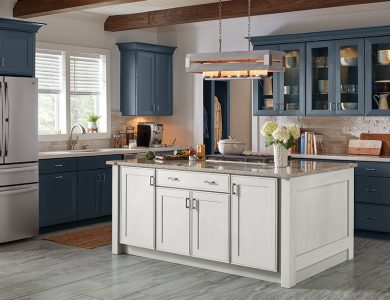
Sustainable Pasta Packaging: Innovative Eco-Friendly Options for Pasta Boxes
Pasta Packaging: Unlocking a greener future for pasta lovers, sustainable packaging innovations are revolutionizing the industry, but what’s next? The traditional approach to pasta packaging is undergoing a significant transformation as manufacturers increasingly adopt sustainable materials and innovative designs to appeal to environmentally conscious consumers. Eco-friendly materials such as stone paper, plant-based plastics, and mushroom-based packaging are replacing traditional options.
Innovative packaging designs, including unique shapes and customization options, enhance product visibility and differentiation. Brands are adopting sustainable branding strategies to convey their commitment to eco-friendly practices. As the demand for sustainable solutions surges, the future of pasta packaging is poised to become even more innovative, with compostable solutions and recyclable paper trays on the horizon.
Main Points
- Sustainable pasta packaging incorporates eco-friendly materials like stone paper, plant-based plastics, and mushroom-based packaging to reduce waste. • Innovative packaging designs, such as unique shapes and bespoke designs, differentiate products and enhance brand visibility. • Customization options, including special edition packaging and collaborations with artists, foster customer loyalty and create a cohesive brand experience. • Brands can convey their commitment to eco-friendliness through certifications, logos, and narratives that resonate with environmentally conscious consumers. • The future of sustainable pasta packaging involves exploring compostable materials, recyclable paper trays, and certified paper packaging to promote brand recognition and sustainability.
Redefining Pasta Packaging Sustainability
Redefining Pasta Packaging Sustainability often begins with a critical examination of the materials used, as the incorporation of eco-friendly alternatives can greatly reduce the environmental footprint of pasta packaging.
The traditional packaging materials used in Pasta Boxes have a significant environmental impact, contributing to packaging waste and harming the ecosystem. To mitigate this, the industry is shifting towards eco-friendly materials that minimize waste and reduce the carbon footprint.
For instance, innovative packaging designs are incorporating recyclable cardboard and vacuum-sealed packaging to convey a message of responsibility and commitment to the environment. By adopting sustainable materials and designs, Pasta Boxes can reduce their environmental impact, appealing to the growing demographic of environmentally conscious consumers.
As consumers become increasingly aware of the ecological consequences of their purchasing decisions, the demand for eco-friendly packaging is on the rise. By redefining pasta packaging sustainability, manufacturers can not only reduce their environmental footprint but also enhance their brand reputation and appeal to the values-driven consumer.
Eco-Friendly Materials in Pasta Boxes
Innovative manufacturers are increasingly incorporating eco-friendly materials into their pasta boxes, such as stone paper, plant-based plastics, and mushroom-based packaging, to reduce environmental impact and appeal to the growing demographic of environmentally conscious consumers.
These eco-friendly materials offer sustainable alternatives to traditional packaging options, reducing environmental impact and aligning with the values of environmentally conscious consumers who prioritize sustainability. By choosing eco-packaging, brands can demonstrate their commitment to the environment and tell a story of responsibility.
Recyclable cardboard and vacuum-sealed packaging are increasingly popular choices for eco-friendly pasta boxes, offering a sustainable solution for packaging pasta products. Sustainable packaging solutions in pasta boxes not only reduce waste but also contribute to a reduced carbon footprint. As consumers become more environmentally aware, the demand for eco-friendly packaging is on the rise.
Innovative Shapes for Pasta Packaging
With the rise of eco-friendly materials, pasta manufacturers are now focusing on innovative packaging shapes to differentiate their products and capture consumers’ attention in a crowded market. Unique packaging shapes, such as hexagonal boxes, spiral-themed containers, or clear casings, attract consumer attention on the shelves and enhance product visibility and differentiation in the competitive pasta market.
Tailor-made packaging designs for each pasta shape create a cohesive and engaging brand experience. Specialty finishes, such as soft-touch matte on pasta packaging shapes, add a luxurious and premium feel to the product. Incorporating interactive elements like embossing or heat-sensitive ink on packaging shapes engages consumers and elevates brand perception.
These innovative packaging shapes not only provide an eco-friendly solution but also offer a distinctive brand identity, setting pasta manufacturers apart in the market. By adopting innovative packaging shapes, manufacturers can create a memorable brand experience, increase brand loyalty, and ultimately drive sales in the pasta market.
Customization Options for Pasta Boxes
By offering bespoke designs, pasta manufacturers can create a unique brand identity and foster customer loyalty through customized packaging solutions that resonate with their target audience. Customization options for pasta boxes are numerous, ranging from unique designs that enhance brand recognition to special edition packaging for holidays or events, generating excitement and buzz around pasta products.
Custom boxes for subscription services provide a personalized touch, encouraging recurring purchases. Collaboration with artists or influencers on pasta box designs can increase brand visibility and appeal to a wider audience. By incorporating responsibly managed materials and reducing waste, pasta manufacturers can create eco-friendly packaging designs that align with their sustainable goals.
Customized pasta packaging strategies can lead to increased sales and customer loyalty through tailored and engaging designs. With innovative packaging design, manufacturers can differentiate themselves in a competitive market, while promoting a sustainable brand image.
Pasta Product Branding Strategies for Sustainable Packaging
Effective branding strategies for sustainable pasta manufacturers involve crafting a narrative that resonates with environmentally conscious consumers. This includes conveying a commitment to eco-friendly practices through packaging design and messaging. By highlighting certifications like FSC-certified materials or recyclable packaging components, brands can enhance their credibility and appeal to consumers seeking sustainable products.
Emphasizing the brand’s commitment to sustainability through packaging design and messaging attracts environmentally conscious consumers who prioritize reducing their environmental footprint. Incorporating eco-friendly logos or labels on pasta boxes reinforces the brand’s dedication to sustainable practices. By utilizing storytelling elements on packaging to showcase the brand’s eco-friendly journey, manufacturers can create an emotional connection with consumers seeking environmentally responsible products.
Future of Sustainable Pasta Packaging
As the demand for eco-friendly packaging solutions continues to surge, the future of sustainable pasta packaging is poised to witness a significant shift towards innovative, environmentally responsible materials and designs. To reduce environmental impact, companies like Novamont, Gualapack, and Ilip are developing compostable packaging solutions for pasta products.
Innovative packaging techniques, such as the use of recyclable paper trays, certified paper packaging, and recycled plastic obtained from chemical recycling, are being explored. Eco-friendly pasta packaging options like stone paper, plant-based plastics, and mushroom-based packaging are gaining popularity. These sustainable materials and packaging designs will play an important role in enhancing brand recognition and promoting sustainability in the pasta industry.
Custom pasta packaging strategies will focus on reducing waste, using eco-friendly materials, and enhancing brand recognition. As consumers become increasingly environmentally conscious, sustainable pasta packaging will be essential for companies to attract and retain customers. By adopting innovative, eco-friendly packaging options, companies can reduce their environmental footprint, improve brand recognition, and stay ahead in the competitive pasta market.



